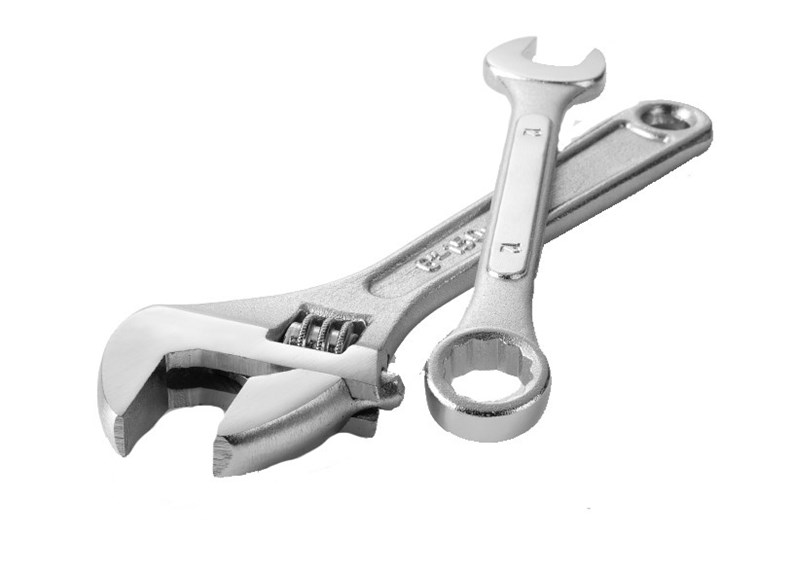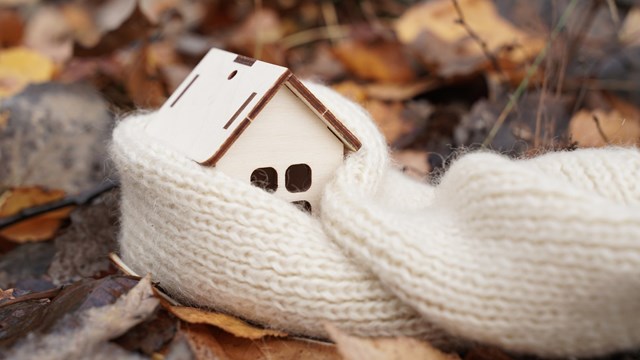They say cleanliness is next to godliness, and while the average homeowner's association doesn't have the vast expanses of marble and carpet many high-rise condo buildings have, clean, well-maintained common spaces and neatly-kept landscaping are integral to association members' quality of life. Not only that, but they're also the first areas potential buyers see, so it's important to keep these places looking immaculate—both for residents and for home-hunters.
But it's no small task to keep lobbies, clubhouses, and community areas spotless. Association maintenance staff has to have the right supplies on hand, easily accessible whenever they're needed, and to be able to order enough to do their job while still keeping an eye on the association's bottom line.
Keeping Things Clean
While residents can just drive down to the local store to get cleaning supplies, light bulbs and other household items, the quantity of supplies needed for an association's upkeep usually requires a wholesale or specialty supplier in order to be cost-effective. Secondly, a lot of thought should be put into the organization of your association's ordering system. Who orders what? How much? What kinds of supplies should every community have on hand, and what might be just collecting dust in the storeroom?
It's important to first understand that there are two categories of maintenance in any association, whether it's a single high-rise apartment building or a sprawling suburban development: the kind that requires a professional contractor (usually anything involving major plumbing repairs, electricity, or structural issues) and the kind that doesn't (blown fuses, flooded toilets, leaf raking, and so forth). When bathwater starts running out the door into the driveway or the switch plate on the wall starts smoking, it's time to call in professional help.
According to Peter Grech, a building operations consultant, president of the Superintendents Technical Association in New York City, and a superintendent himself, no homeowner (or super, for that matter) should attempt to fix such a problem on their own unless they themselves are a professional in that particular field.
But when you've just got a couple of bulbs burned out in the community room, or the grounds are in desperate need of raking, the tools and supplies for these hands-on jobs are usually the responsibility of your association's maintenance staff.
The Professional's Professionals
From rakes to lawnmowers, there are hundreds of different items that an association needs in its day-to-day operation. Fortunately, there are numerous businesses that specialize in stocking the maintenance storerooms of buildings and condo communities. Steve Borut, the owner and president of Borut Supply, a Brooklyn, New York-based building supply company, replenishes all types of residential communities in the tri-state area. Borut says he carries a wide range of supplies, including electrical, plumbing, cleaning, janitorial—pretty much anything to keep buildings clean, too. He adds he's not a hardware store, but he does specialize in building services.
In addition to the different volume of goods a condo association needs to order from a supplier, there is certainly the question of what ought to be ordered in the first place. As far as chemical supplies go, Grech says what one would expect: that an association needs to keep on hand the usual bleaches and soaps, plus pool cleaning supplies, if applicable. Most HOAs keep small stocks of basic household cleaners like Windex and Drano, along with heavier-duty products like ammonia.
What may come as a surprise to some, however, is that federal Occupational Safety and Health Administration (OSHA) regulations require all residential buildings and organizations to have—permanently on file—the chemical composition of every chemical compound on the premises. Regulations state that this information should be easily accessible to the residents and employees for a number of reasons—safety and possible liability for injury being two of the most important.
Grech also points out that it is very important that employees are shown exactly how to safely use and store any potentially hazardous substances. On-the-package instructions may seem pretty self-explanatory, but serious injury can occur when any tool or product is improperly used. Therefore, staff members should all be instructed on the right way and the wrong way to work with any kind of cleaning product, he says.
Green Concerns
One issue that has come to the forefront in recent years is that of environmentally sensitive cleaning products. While years ago there might have been one or two alternatives to the usual arsenal of bleach, ammonia, and lawn fertilizer, today there are scores of products designed to be gentler, both on the surfaces they treat and the people who use them.
"We work with a lot of different buildings and developments where they want environmentally safer products," says Ben Ashery of Zep Manufacturing, a building supply firm in Springfield. "If someone doesn't like the strong smell of ammonia, for example, today we have 10 products that do the same job as ammonia, if not better."
The new generation of cleaning and maintenance products includes citrus-based and corn-ethanol-based cleaners, eucalyptus oil-based deodorants, all-natural polishes, non-toxic disinfectants and insecticides and fragrance-free cleaners.
But even with the promise of something new and better, it's important to keep in mind that it's not likely the association's manager or board members who will be using the allegedly new-and-improved products every day.
"Sometimes, the purchasing manager will want to see a demonstration," says Ashery. "And they may pick out a few different products. But it's the staff that's using the product. Sometimes managers are more concerned with cost than are the staff, who see how good a job these products actually do."
And if a new product is too messy, too complicated, or too caustic to be practical on an everyday basis, maintenance staff will likely go right back to using the old stand-by, and the new product or equipment will go to waste.
Taking Orders
Another hidden cost when it comes to supplies is the upkeep of the supplies themselves. Of course, there are some basic cleaning and maintenance supplies that all associations and buildings need, like window and glass cleaners, various sizes of light bulbs, paint for touch-ups of siding, lawn furniture, and fences, duct tape, and drain cleaner—along with basic implements like garden hoses, rakes, mops, brooms, and well stocked toolboxes. If your building has a pool or sauna, special chemicals will be needed to balance the pH and keep the algae at bay. And if you have a gym with shower rooms and perhaps a sauna or steam room, you'll need commercial-grade cleaners for toilets, showers and tiles.
There are other, larger maintenance items that a well-stocked HOA should consider keeping on hand as well; things like weed-trimmers, leaf-blowers, and perhaps a push-mower to keep things presentable between visits from the professional landscaper, tall aluminum ladders for cleaning debris (and retrieving wayward basketballs) from gutters, heavy-duty lightbulbs for HOA-maintained street lamps, ice-melting compound, and possibly a snowblower to help residents dig out after a sudden blizzard. Of course, many larger associations have landscaping and snow removal contracts with well-equipped professionals, but it never hurts to be able to fend for oneself on short notice.
If an item does need special approval—such as with bulk buying—the association's board or board representative can grant that as well. "Bulk ordering makes a lot of sense in some cases," says Grech. "Take ice-melt, for example. If you've got 10 units, buying five or six bags for each unit can get awfully expensive. It's better at that point to buy a truckload and distribute it between properties."
So once the supply list has been made and approvals have been cleared, how often should a supply order be placed? On one hand, it's not a good idea to run the risk of running out of anything. If your association's maintenance team doesn't have what they need on hand, they can't get the job done. On the other hand, ordering 80 pounds of Clorox for a 10-unit condo complex probably isn't cost-effective either, and takes up valuable space in the meantime.
One good way to keep track of the items an association needs is to make a laminated, itemized list and put it up in the storeroom. When the supply of a certain item or chemical is running low, having a custodian or other staffer simply check the "re-order" box with a dry-erase pen can alert the super to place an order soon and the list can be used again and again. For his part, Grech says he never orders more than he needs, but does allow for delayed shipments or incorrect orders by keeping just a couple of weeks' worth of supplies on hand. The ordering process is truly different for every community, but once a month seems to be the norm.
Different Strokes
It would be nice to have a standardized list of what a multifamily residential development needs—a person could just order everything from one set form—but such a thing just doesn't exist: it wouldn't be practical or realistic. Borut says his company has over 800 accounts that qualify as residential, and that every single one of them is different.
Independent building supply centers specialize in this kind of trade, but it's up to an association's board or management company as to where supplies are obtained. Oftentimes supplies are purchased like contracting services are purchased, with sealed bids from various suppliers. Grech says that yes, he orders his chemicals from a chemical supply company and arrived at that decision through a bidding process. "We talk to different companies and go with who we're more comfortable with. We usually review the standing orders we have about once a year."
There is no lack of resources when it comes to stocking your association's storerooms with the proper supplies for the inevitable spills, blown fuses and lawn debris. By taking a close look at your community's individual characteristics and with some planning and organization, you'll never be without the tools and supplies you need.
Anthony Stoeckert is a freelance writer and frequent contributor to The New Jersey Cooperator.







Leave a Comment